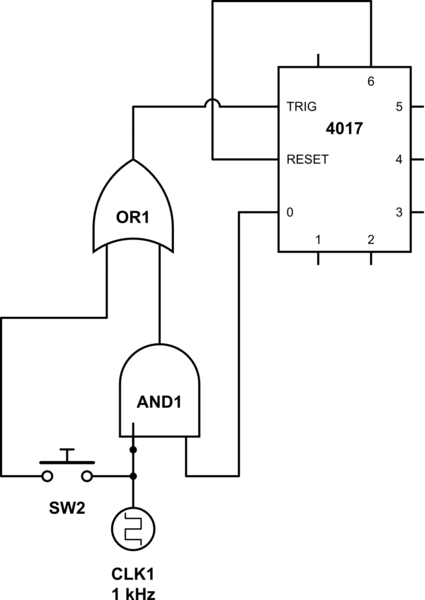I was thinking of making a die that runs somehow from 1 to 6. Using a decade counter it resets after reaching > 6. But the problem is at that point the pulses from the digital clock may still flow but I need it to for sure hit one pulse right after reset, otherwise it will display a zero. It has to be directly after resetting because if the button is released after 6 it should go to displaying 1, not 0. How to do this?

simulate this circuit – Schematic created using CircuitLab

